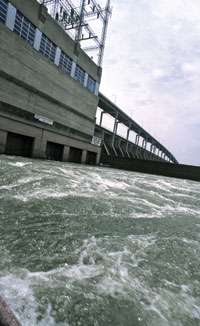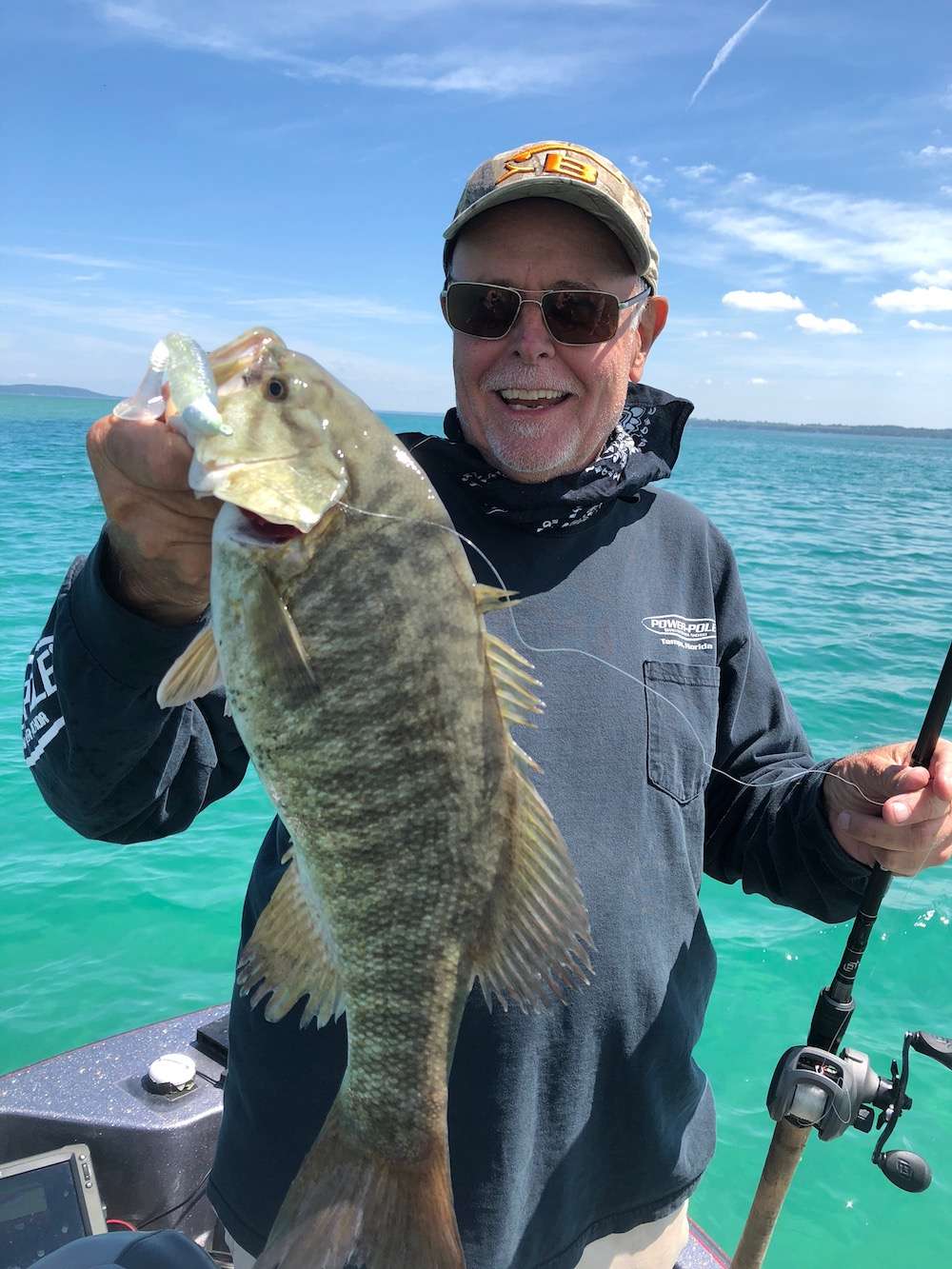
Most bass anglers are sufficiently adept at locating and fishing obvious structural elements of reservoirs, including points, ledges and offshore humps. Yet these same fishermen often overlook the most obvious reservoir structures of all: dams. These concrete monoliths and the structures that surround them can hold a mother lode of bass. BASS Times asked two Bassmaster Elite Series pros, Cliff Pace and Bill Lowen, for some pointers on fishing the areas immediately above and below dams. Their responses may have you heading for the dam on your next bass outing.
Current rules
"Bass living around dams are ruled by current," Pace said. "This is especially true in a river-run reservoir with a noticeable flow: Kentucky and Pickwick lakes on the Tennessee River come to mind. Here, current dictates where bass locate, when they eat, what they eat and when they rest. The bass bite is usually strongest during a healthy current flow and slowest when there's little or no flow. Of course, dams — both upstream and downstream — dictate to a large measure when and how much current will be flowing through the system."
Bass residing immediately above and below dams utilize current breaks extensively, the Mississippi pro continued. "Largemouth, especially, aren't comfortable in swift current, but rather than totally avoid it, they use it to their advantage when feeding. They'll get behind some current-breaking structure or object on the bottom, hold there until baitfish pass by, then rush out and grab a meal." Both Pace and Ohio pro Bill Lowen claim that identifying current breaks is paramount to successful dam fishing. They listed several key elements to look for when fishing directly above or below a dam:
Nearby points
"I especially like 'finger points' close to dams that jut out with a slow taper toward the river channel," Lowen said. "They're usually composed of mud and scattered rock, and like fingers, they grab logs and tree limbs floating downstream during floods. Bass get behind these big pieces of cover when current is flowing and ambush passing baitfish schools."
Rockpiles
"There was a great deal of blasting during the dam's construction back in the '40s or '50s," Pace said. "Loose rocks were piled up adjacent to the river channel by cranes or bulldozers prior to the reservoir's formation. Today, these rockpiles are important holding and ambush areas for bass."
Offshore humps
"Whether naturally occurring or manmade, any high spot adjacent to a dam is a major bass attractor," Pace noted. "Bass will scatter around the hump when current is slack and bunch up behind a lone stump or rock on top of the structure when they're pulling water at the dam."
Diversion walls
"These concrete structures deflect current and help prevent erosion of the shoreline near the dam," Lowen said. "They're a baitfish magnet as well as a current break — they develop a slimy coating of algae, and you'll often see big schools of shad grazing on them."
Miscellaneous submerged objects
What Pace refers to as "the detritus of civilization" often ends up on the bottom immediately above and below dams, providing unexpected holding and feeding stations for bass. "Old shopping carts, junk cars, lawn chairs, trash cans — you name it, it's probably on the bottom around your local dam," Pace said. "Bass don't know or care that this stuff is garbage; they use it just like they would a rock or log on the bottom."
Riprap techniques
One of the most obvious structures both above and below any dam is a riprap (broken rock) bank. "Riprap draws bass because it attracts so much forage," Lowen said. "Shad feed on algae growing on the rocks and are in turn preyed upon by bass. Crawfish are abundant on riprap; they feed on dead fish and other organic matter that gets trapped between the rocks."
At first glance riprap all looks alike and you risk wasting a lot of time fishing it, he cautioned. "Skip areas that look the same and target little points or indentations along the bank, as well as places where two different sizes of rock occur close together — this is where most of the bass will be." "When fishing riprap in a tournament, quickly determine how far off the bank bass are holding," Pace stressed. "When intense current is sweeping down the bank, they could be hugging the rocks, but if the current is slower, they may be 5 or 6 feet off the bank.
Pay attention to where your strikes occur in relation to the bank, then position your boat so your lure spends the maximum amount of time in this depth zone during your retrieves." The most common angler complaint when fishing riprap is constantly hanging your lure, especially a worm or jig, between the rocks. Lowen reduces the likelihood of this occurrence by using a fairly light sinker or jig, such as 1/4 ounce, on 20-pound fluorocarbon line. "This combination lets the lure glide over the rocks rather than crash down between the cracks. Fluorocarbon is an absolute must around riprap because of its extreme sensitivity and abrasion resistance."
Tailrace tactics
Both pros mentioned the overlooked bass opportunities that occur below dams. "The dam's turbines act like a huge conveyer belt, delivering injured and stunned baitfish to bass," Lowen said. "They don't have to move far to feed — they just set up behind a current break and get fat by picking off food that floats their way." The best times to fish a tailrace are midsummer and midwinter, Pace explained. "In hot weather, the tailrace is often significantly cooler and more thoroughly oxygenated than the water above the dam, making for more active bass. In winter, it'll often be warmer than lake water.
" Summer tailrace bass can be extremely aggressive, Pace has found. "They won't be shy about getting into current now — they seem to like to have some water flowing over them. Fast moving lures like crankbaits and topwater stickbaits work great below dams in summer." In winter, Pace finds his quarry sticking tighter to current breaks and catches them on slow moving suspending jerkbaits and football jigs. Pay attention to baitfish size when fishing a tailrace,
Lowen advised. "There's usually tons of bait below a dam, but on any given day, bass will be often key on one specific size of baitfish. Try smaller lures like swim jigs and leadhead grubs as well as bigger offerings, such as 6-inch soft jerkbaits and big swimbaits, until you get a reaction from quality bass." Hang onto your rod when casting these bigger lures into swift tailrace water, Lowen cautioned. "This is prime territory for huge stripers and hybrids, and they'll whack a big bait with a vengeance.





